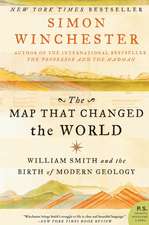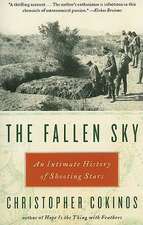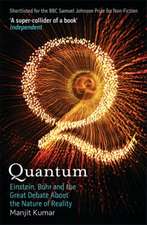Instrumental Traditions and Theories of Light: The Uses of Instruments in the Optical Revolution: Science and Philosophy, cartea 9
Autor Xiang Chenen Limba Engleză Paperback – 10 oct 2012
Readership: Scholars and graduate students in the history of science, history of instrument, philosophy of science and science studies. Can also be used as a textbook in graduate courses on 19th century physics.
| Toate formatele și edițiile | Preț | Express |
|---|---|---|
| Paperback (1) | 637.59 lei 6-8 săpt. | |
| SPRINGER NETHERLANDS – 10 oct 2012 | 637.59 lei 6-8 săpt. | |
| Hardback (1) | 643.99 lei 6-8 săpt. | |
| SPRINGER NETHERLANDS – 30 iun 2000 | 643.99 lei 6-8 săpt. |
Preț: 637.59 lei
Preț vechi: 750.11 lei
-15% Nou
Puncte Express: 956
Preț estimativ în valută:
121.100€ • 127.38$ • 100.97£
121.100€ • 127.38$ • 100.97£
Carte tipărită la comandă
Livrare economică 05-19 aprilie
Preluare comenzi: 021 569.72.76
Specificații
ISBN-13: 9789401058247
ISBN-10: 9401058245
Pagini: 240
Ilustrații: XXIII, 213 p.
Dimensiuni: 155 x 235 x 13 mm
Greutate: 0.34 kg
Ediția:2000
Editura: SPRINGER NETHERLANDS
Colecția Springer
Seria Science and Philosophy
Locul publicării:Dordrecht, Netherlands
ISBN-10: 9401058245
Pagini: 240
Ilustrații: XXIII, 213 p.
Dimensiuni: 155 x 235 x 13 mm
Greutate: 0.34 kg
Ediția:2000
Editura: SPRINGER NETHERLANDS
Colecția Springer
Seria Science and Philosophy
Locul publicării:Dordrecht, Netherlands
Public țintă
ResearchCuprins
1. Comparisons of Explanatory Power.- 1. Introducing the wave theory to Britain.- 2. Comparing the explanatory powers.- 3. The reflection of a particle theorist.- 4. Improving the explanatory power of the particle theory.- 5. The problem of selective absorption.- 2. Explanatory Power and Classification.- 1. The Newtonian taxonomic systems.- 2. Herschel’s synthetic attempt.- 3. Lloyd’s dichotomous design.- 3. Classification and the Use of Instruments.- 1. Brewster’s plate polarizers and crystal analyzers.- 2. Fresnel’s innovative uses of crystal analyzers.- 3. Herschel’s understanding of partial polarization.- 4. Lloyd and conical polarization.- 4. The Dispute over Dispersion.- 1. Powell’s formulas of dispersion.- 2. Fraunhofer’s theodolites and spectral lines.- 3. Powell’s hollow prisms and spectral lines.- 4. Brewster’s telescope and spectral lines.- 5. The difficulties of making gratings.- 6. The impasse in the debate.- 5. The Discovery of the “Polarity of Light”.- 1. The discovery of the “polarity of light”.- 2. Brewster’s classification.- 3. The wave explanations.- 4. The setback of the wave theory.- 5. Powell’s hollow prism.- 6. Stokes’s solution.- 6. The Measurements of the Intensity of Light.- 1. Potter’s reflecting photometer.- 2. Potter’s measurements of metallic mirrors.- 3. Potter’s measurements of glass mirrors.- 4. Potter’s comparative photometer.- 5. The debate on the reliability of the eye.- 6. Potter’s attack on the wave account of diffraction.- 7. Instrumental Traditions.- 1. Optical instruments as image-making devices.- 2. The eye as an optical instrument.- 3. Optical instruments as measuring devices.- 4. Whewell on optical measurements.- 5. The visual tradition.- 6. The geometric tradition.- 8. The GeometricTradition and the Wave Theory of Light.- 1. Humboldtian sciences: measuring nature.- 2. The shortage of scientific manpower in optics.- 3. A new generation of physicists.- 4. Stokes’s experiments on fluorescence.- 5. Measuring the velocity of light.- 6. The status of the wave theory.- 9. The Visual Tradition and the Closure of the Optical Revolution.- 1. Stereoscopes and the studies of space perception.- 2. Stroboscopes and the studies of visual persistence.- 3. Kaleidoscopes and the making of “philosophical toys”.- 4. Binocular cameras and the photographic industry.- 5. The end of the optical revolution.- Conclusion.- Notes.- References.- Name Index.




















